Making a start
Exploring different ways of starting a painting and when they might be appropriate
"Every brush stroke while he painted had modelled the head or further simplified it. He was careful to insist that there were many roads to Rome, that beautiful painting would be the result of any method or no method, but he was convinced that by the method he advocated, and followed all his life, a freedom could be acquired, a technical mastery that left the mind at liberty to concentrate on a deeper or more subtle expression."
from ‘John Sargent’, by Evan Charteris
Dear Subscribers,
For this newsletter, I wanted to start exploring different approaches to starting a painting, sometimes called a block-in, and the various situations when it might be appropriate to use them.
First, I ought to define what I mean by ‘block-in’ and why it might matter to a painter. There is a school of thought in representational painting that if one can simply paint the right colour in the right place with the right shape, then a painting might be completed like a jigsaw puzzle, shape-by-shape, without misstep or correction. If this were actually possible or led to the desired result, then the block-in could be dispensed with, assuming an artist had the skill to accomplish such a feat. However, the practical truth is that the block-in can serve several useful purposes beyond just putting the paint in the right place, depending on one's vision for the painting.
Some of these purposes might include:
It allows the various difficulties of representational painting to be separated into stages, so that the problems of drawing can be tackled separately from those of colour, for example.
It makes possible the development of layers of paint, as opposed to one layer, which allows for the possibility of refinement and subtlety of paint quality that would be hard or impossible to achieve otherwise.
It allows for greater flexibility in composition and alterations when using a gradual stage-by-stage approach.
One can more quickly see the ‘big picture’ and general effect of the whole painting before getting into subtleties and details.
In ‘Alla Prima’, Richard Schmid describes several different methods of starting a painting, which can be divided into two main categories: gradual and immediate. They all involve working with the fundamental objective visual elements* of painting but vary in order and emphasis
Here is my own slant on the different approaches:
Line and mass
This gradual approach emphasises drawing first by looking for obvious boundary lines between shapes in the subject. I like to think of these lines as scaffolding because they serve the purpose of construction and are not usually a feature of the finished painting, as they are painted over in the process. The mass part of this approach involves filling in between the lines with colour shapes, somewhat like 'painting-by-numbers' but without the numbers, and where you choose the colours to fill in between the lines!
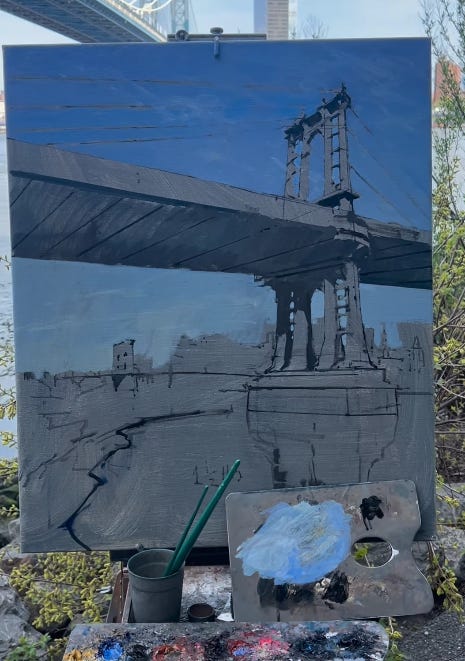
Impressionistic
I like to think of this as ‘coming out of the fog’. It is a colour-led approach in which hue and chroma are often given as much or more priority than the value aspect of colour. This approach is the opposite of Line and Mass in that drawing is of least importance initially, and colour takes precedence. This method is well-suited to capturing fleeting light effects, which is probably why it is associated with Impressionism, where outdoor light and colour effects were the main interests. However, it can be usefully applied to any subject. The 'trick' is being comfortable with chaos, especially at the beginning, and having the skill to select and direct the course of the painting based on a solid experiential understanding of the fundamentals.
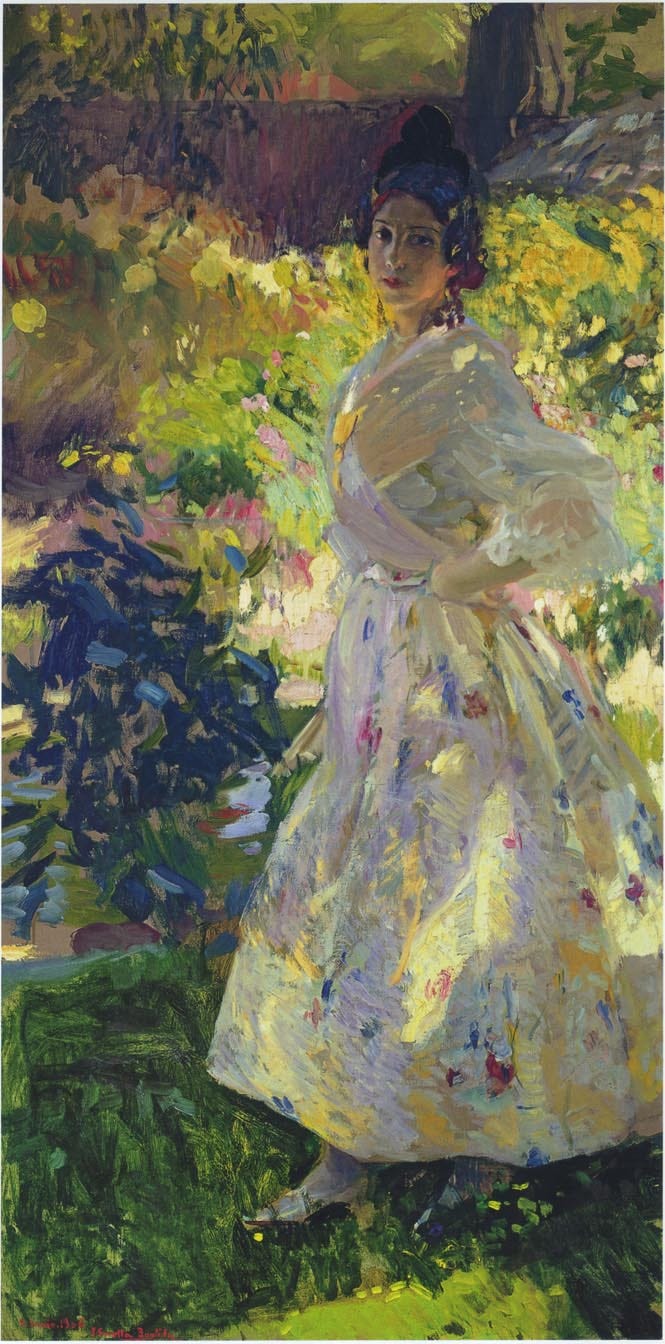
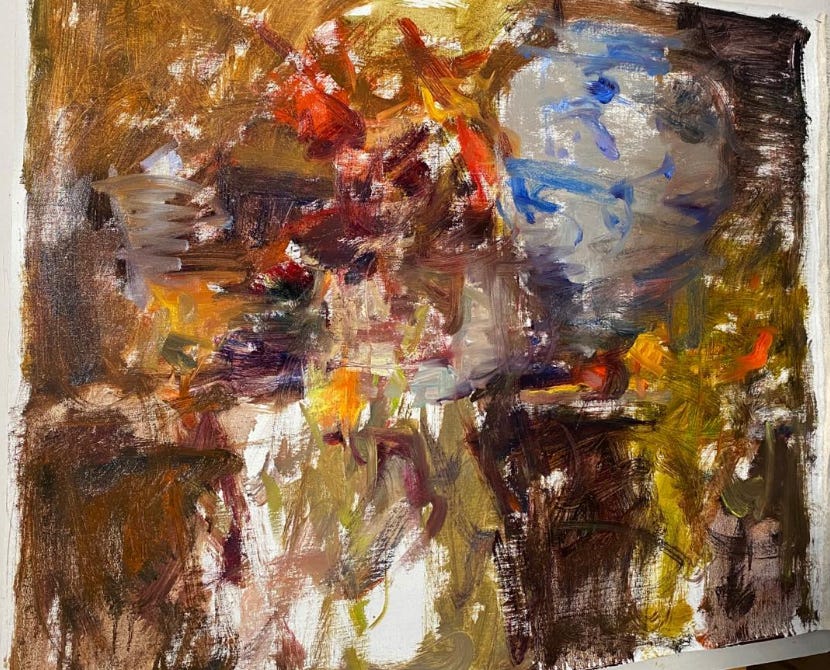
Value led block-in
This approach is characterised by starting with colour blocks or shapes. In this method, one may do little or no drawing at the start, instead focusing on massing in the major value shapes with some indication of hue and chroma, which will be refined later. When value relationships between light and shadow are the primary consideration, this approach is particularly effective for subjects with distinct forms, such as still life. This is the way I usually start most of my paintings, especially florals, as the demands of accurate drawing are more forgiving, especially in the beginning, than with other subjects.
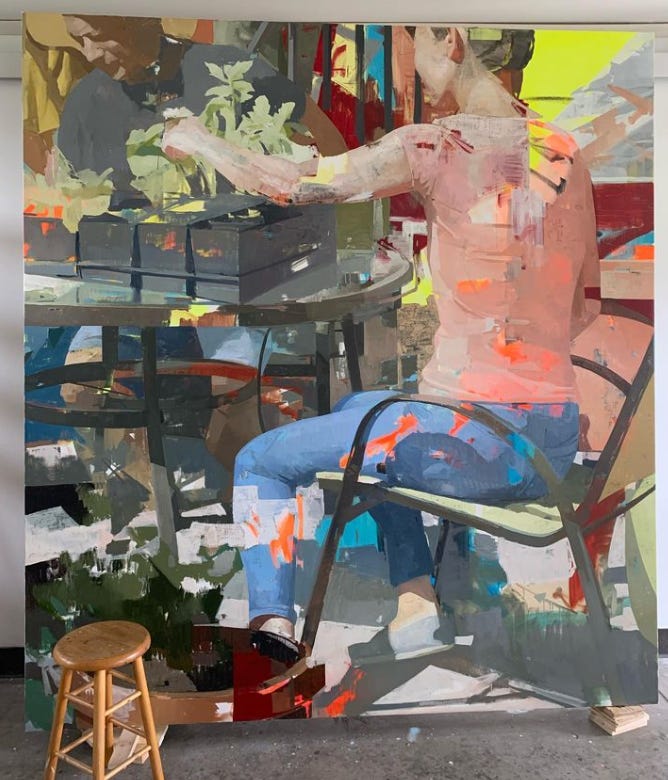
Finish-as-you-go
Schmid calls this the Selective Start in *Alla Prima*. It’s the most ‘immediate’ approach. I like to think of it as a jigsaw approach, as each shape is completed in terms of shape, colour (value, hue, chroma), and edges before moving on to the next shape. Ideally, one would need to have a very clear vision of what the final painting will look like, as planning is key to its success. One would also usually start at a focal point to have something definite for comparisons.
This is the hardest approach in one sense because one needs to consider all visual aspects simultaneously, but it could be the quickest and most appropriate if the subject is liable to change quickly. I think this approach is very subject-dependent, and I was unable to find any historical examples of this method. I suspect that in practice, some drawing will be needed at the start. Let me know in the comments if you know of any!
Indirect Classical Method
This gradual approach is drawing and value-led, often starting with a monochromatic underpainting. Subsequent layers are built upon previous dry layers, often using glazing and scumbling to develop colour and value further. This method is capable of achieving very subtle effects not normally achievable with direct or alla prima methods, but the subject must be capable of remaining constant through a prolonged development period. This approach would be well suited when working from photo reference or other studies done from life or more imaginative subjects that are developed over a longer period than is typical with alla prima or direct painting.
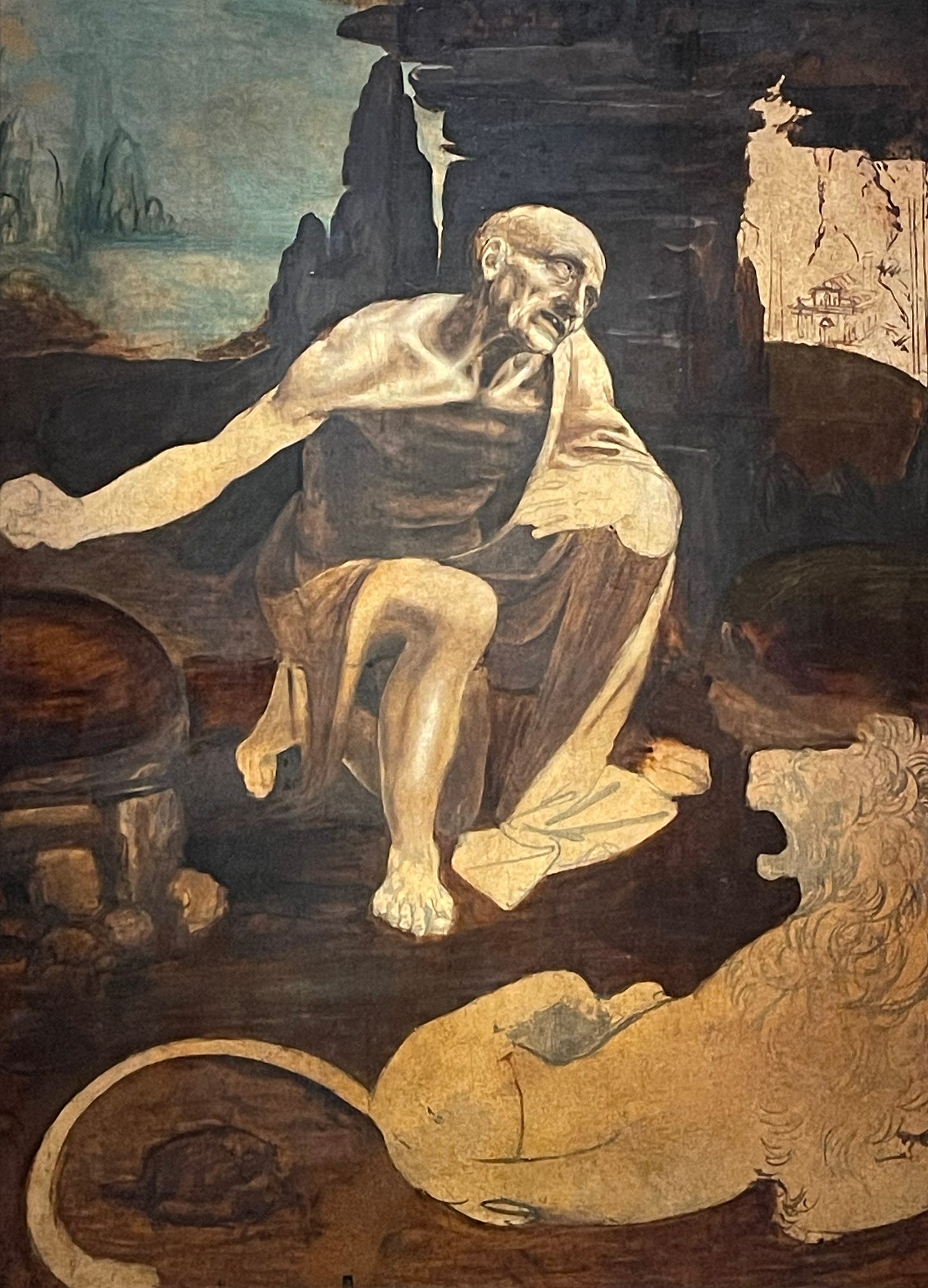
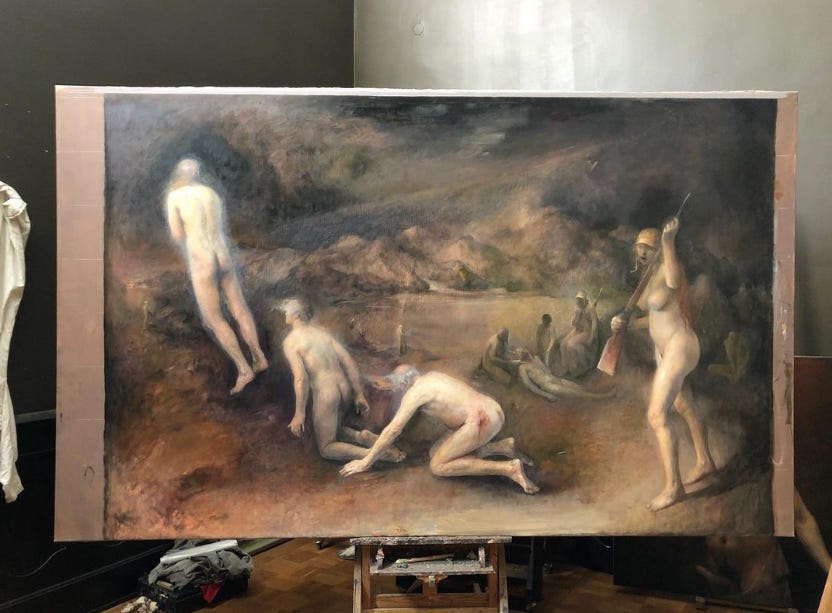
In practice, there may not be a clear distinction between each approach, and a combination of methods may be employed. Each approach has advantages and potential pitfalls.
Let me know if you think I’ve missed out on another way of starting which doesn’t fall into any of these categories!
The line and mass approach can sometimes lead to a ‘painting-by-numbers’ appearance, where the boundary lines between colour shapes are very obvious, which is usually not a desirable outcome. Another issue with planning out the drawing aspect first is when there’s a desire to change the subject or composition after the painting has started. This can result in redoing all or part of the drawing, which on a complex work could be a major headache. Additionally, the painting process can become lengthy as the ‘drawing stage’ is separated from the ‘colouring stage’. On the other hand, this separation can be advantageous for breaking down complex subjects into more manageable stages.
In situations where the subject requires accurate drawing or when the subject is complex and completion time (over several sessions, for example) is not a concern, then the line and mass approach could be appropriate. However, in situations where time is limited and the subject is more fleeting, this approach may need to be abbreviated by focusing only on the most important shapes or choosing a more appropriate block-in strategy.
For example, when using artificial light as in the example below, I was fairly confident that the line and mass approach was a good strategy. If the subject had been lit by sunlight from a window, I would have had about 2-3 hours before the light and shadow pattern completely changed; in that case, the line and mass approach would have been more challenging.
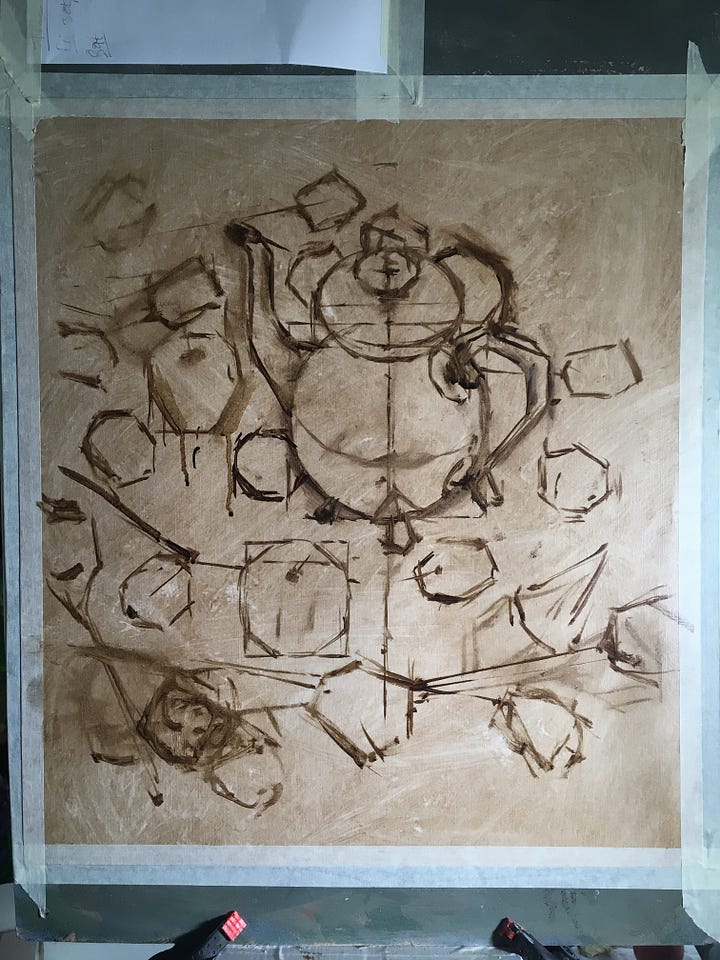
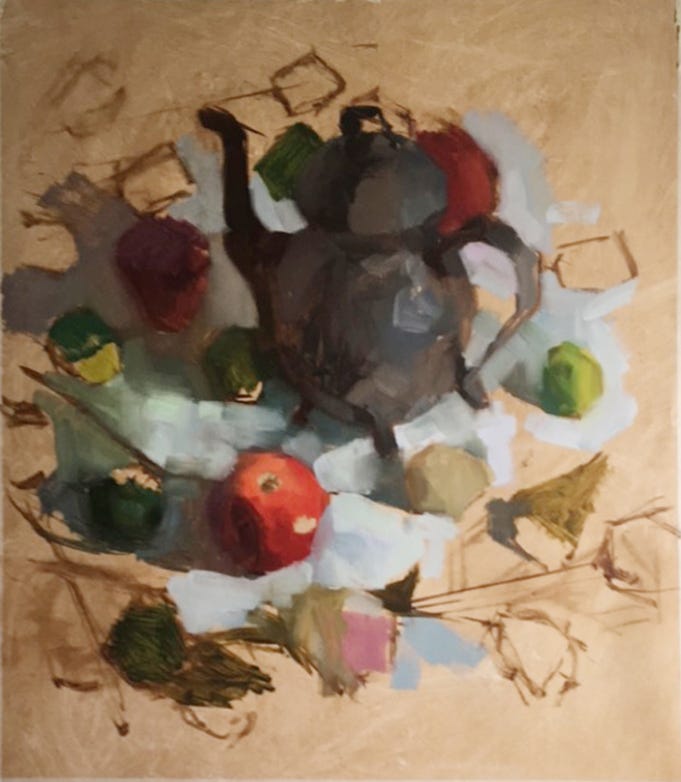
"As I paint in the masses I add drawing and accents. Details need no attention until the canvas is almost completed. Thus, if a tree is adequately treated as mass, volume, color and value, very little detail of branches and leaves is needed—the less of this the better. In this lies the difference between drawing and painting. The draftsman deals with the outline form; the painter with mass meeting mass, without any real outline. A painting should not be a colored drawing."
John F. Carlson
Color and method in painting as seen in the work of 12 American painters, by Watson, Ernest William, 1884-1969, p.126
https://archive.org/details/colormethodinpai0000unse
“Vermeer, as has been hinted, apparently started his pictures by laying in the light and shade very flat — without, at first, much suggestion of modelling. One gets this idea because, in some of his pictures he does not seem to have had the time or he did not take the trouble to highly finish certain parts. These parts are always indicated very simply in light and shade; so that it seems reasonable to suppose that it was in this manner that he so started his work.”
Vermeer’s technique
JAN VERMEER OF DELFT, Philip l. Hale, p. 117
https://archive.org/details/janvermeerofdelf00hale
“I had been taught to paint a head in three separate stages, each one repeating — in charcoal, in thin colour-wash and in paint — the same things. By the new method the head developed by one process. Till almost the end there had been no features nor accents, simply a solid shape growing out of and into a background with which it was one. When at last he did put them each accent was studied with an intensity that kept his brush poised in mid-air till eye and hand had steadied to one purpose, and then . . . bling ! the stroke resounded almost like a note of music. It annoyed him very much if the accents were carelessly indicated without accurate consideration of their comparative importance. They were, in a way, the nails upon which the whole structure depended for solidity.”
on J. S. Sargent’s method
JOHN SARGENT BY THE HON. EVAN CHARTERIS, K.C., p183
https://archive.org/details/johnsargent00char
In future newsletters, I hope to delve deeper into each of these approaches and share recordings of demonstrations. I will also be inviting paying subscribers to join me for an informal live painting session to further explore block-in approaches in practice. You are welcome to paint along or simply watch, discuss, and ask questions.
The Zoom link for the first session, on Sunday 14th July, is provided below along with the password to join.
Thanks for your attention, and please feel free to send any questions or comments you may have.
Warm regards,
Alex
*The visual elements of painting are drawing which is composed of line and shape. Composition which is essentially how those lines and shapes are arranged. Colour, which can be divided into value, hue and chroma. Edge quality between shapes, hard and soft. Surface quality which is imparted through painting application thickness, layers, brush work (or other tools of application) as well as properties of the pigments themselves ranging from transparent to opaque. All these are objective aspects of any painting and are somewhat distinct from its subjective aspects.






